Our workplace attire plays a pivotal role in shaping the perceptions of those around us 1.
Whether your goal is to exude charisma, boost productivity, or refine your executive presence, this guide encompasses all the essential aspects of navigating the office dress code and expressing yourself professionally.
For those grappling with self-esteem issues, we’ll also delve into the application of a psychological technique known as enclothed cognition. This approach aims to enhance your confidence and professionalism by strategically choosing certain outfits.
What is An Office Dress Code?
An office dress code refers to a set of guidelines that delineate the suitable attire for employees in a professional workplace. It aims to establish a consistent and professional appearance among staff members, reflecting the company’s values, industry norms, and the desired level of professionalism.
The most prevalent workplace dress codes are:
- Formal: This is the most refined and polished dress code, suitable for special occasions or high-level corporate events. Men typically wear black-tie tuxedos or dark suits with a white dress shirt, bowtie, and formal shoes. Women often opt for elegant gowns or formal dresses, paired with heels and tasteful accessories.
- Business Professional: Common in traditional corporate settings, this dress code demands a conservative and polished appearance. Men are expected to wear tailored suits, dress shirts, ties, and formal shoes. Women can choose tailored suits or dresses with modest necklines, closed-toe shoes, and minimal accessories.
- Business Casual: Striking a balance between professionalism and comfort, business casual allows more flexibility. Men may wear dress slacks, collared shirts (with or without a tie), blazers, loafers, or dress shoes. Women can opt for dress slacks or skirts, blouses, cardigans or blazers, and closed-toe heels or flats. This dress code permits variations in colors and patterns.
- Semi-Casual: Less formal than business casual, this dress code is often seen in creative or startup environments. Men might choose chinos, polo shirts, and casual loafers, while women can wear casual dresses, skirts, well-fitting jeans, along with blouses or sweaters. Stylish sneakers or loafers may be acceptable footwear.
- Casual: The most relaxed dress code, suitable for casual Fridays or laid-back workplaces. Men can wear jeans or khakis with polo shirts, casual button-down shirts, sneakers, or casual shoes. Women have the option of jeans, casual dresses, skirts, and tops, paired with comfortable shoes like flats or stylish sneakers.
Adhering to your company’s dress code is crucial for aligning with professional standards and influencing how colleagues, clients, and superiors perceive you.
- As for the question of whether companies should implement a more flexible dress code policy, the answer depends on various factors such as the nature of the business, industry standards, and the company culture. Implementing a more flexible dress code can enhance employee morale and comfort but should be balanced with maintaining a professional image in client-facing or formal environments.
Why is Dressing Appropriately in the Workplace Important?
Dressing appropriately in the workplace is of paramount importance for several reasons. Consider the scenario of sharing a brief elevator ride with the CEO you aspire to impress – in that fleeting moment, your attire exerts a silent influence that can endure longer than one might anticipate. Research indicates that first impressions are formed within milliseconds 2, and while your skills and expertise remain crucial, your outward appearance sets the initial tone.
Your clothing choices can impact how others perceive you in two key dimensions:
- Warmth: Does your appearance convey trustworthiness, kindness, and collaboration? Are you seen as compassionate?
- Competence: Can others rely on you? Do you project power, intelligence, and capability?
The selection of your clothing can influence perceptions of warmth and competence, ultimately shaping how you are viewed as charismatic in the workplace.
For instance, studies show that when a doctor wears a white coat, patients perceive them as more competent 3. Similarly, a man in a tailored suit is often perceived as more confident 1, successful, and wealthy compared to someone in an off-the-shelf, untailored suit.
An impeccably tailored suit or a thoughtfully chosen ensemble reflects personal style and a conscientious attitude towards your role, showcasing dedication to professionalism that often extends into your work ethic.
Conversely, opting for a more understated casual outfit may make you appear less intimidating during a performance review or staff retreat, contributing to a positive atmosphere that encourages colleagues to mirror your seriousness.
Your attire plays a crucial role in projecting influence and importance in the workplace. Influence is not an inherent trait; it’s a skill that can be cultivated. To help you enhance your charisma, we’ve identified five key laws of influence in our free course: MASTER YOUR SKILLS.
What Differentiates Office Dress Codes?
There isn’t a universal template for office dress codes, as they vary based on company culture, industry, and the nature of work and client interactions.
Below, we delve into the details of the most prevalent types of office dress codes:
Formal
The formal office dress code is predominantly linked to historical business practices. In contemporary times, this attire is typically reserved for executive-level meetings and special black-tie events. Nevertheless, certain workplaces, including Wall Street or law offices, maintain formal office wear as the standard.
This dress code usually features a neutral color scheme, with black, gray, or tan as the primary colors and minimal patterns. Men adhering to the formal office attire norm typically don a straightforward ensemble: a tailored suit, dress shirt, tie, and closed-toe dress shoes.

For women, adhering to a formal attire in the office may involve conservative dresses, skirt suits, or pantsuits, complemented by understated accessories and closed-toed heels. The standard practice often includes wearing pantyhose or tights, and opting for neutral colors is considered most appropriate.
Here’s a video that offers excellent examples for women seeking guidance on dressing formally in the workplace: link to the video.
Business Professional
The business professional dress code closely resembles the formal attire, but it allows for more variety in terms of colors, shoes, and patterns. Men can incorporate a uniquely patterned tie or opt for a short-sleeved collared shirt, and there is no strict requirement for shirts to be tucked in. Additionally, a blazer is not mandatory. On the lower half, men may choose to wear slacks, khakis, or chinos.
Here are a few examples of outfit choices for men:
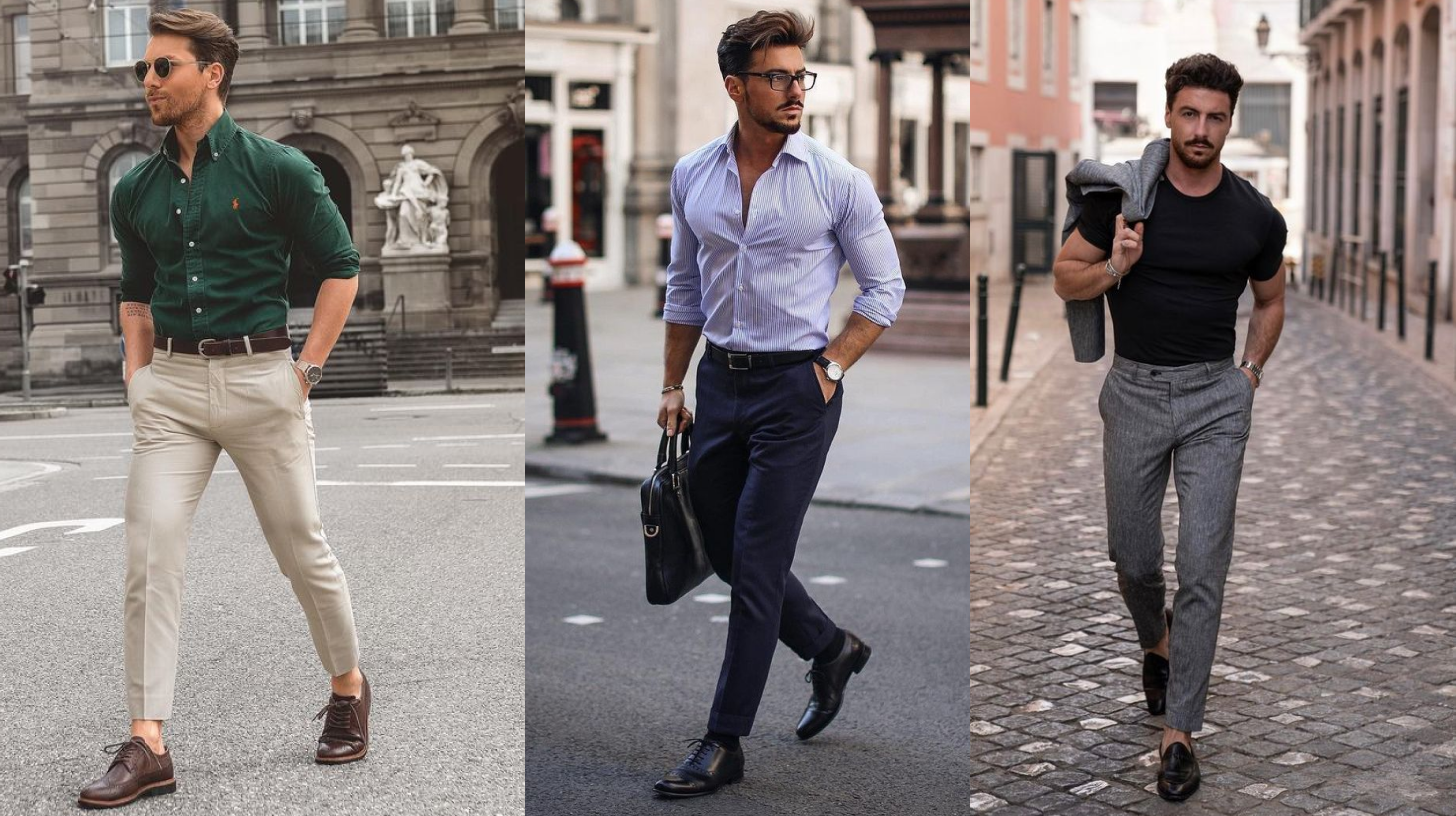
For women, the business professional dress code provides flexibility, allowing for less-tailored dresses or trendy pantsuits that might not be standard in traditional formal wear. It opens the door to experimenting with various skirts, blouses, and conservative attire.
However, it’s advisable to avoid anything shorter than knee-length or shirts that expose a significant amount of cleavage.
The range of options for women is even more extensive, showcasing the distinction between formal and business professional. While these outfits qualify as business professional, they might be considered too unique for a more traditional setting.
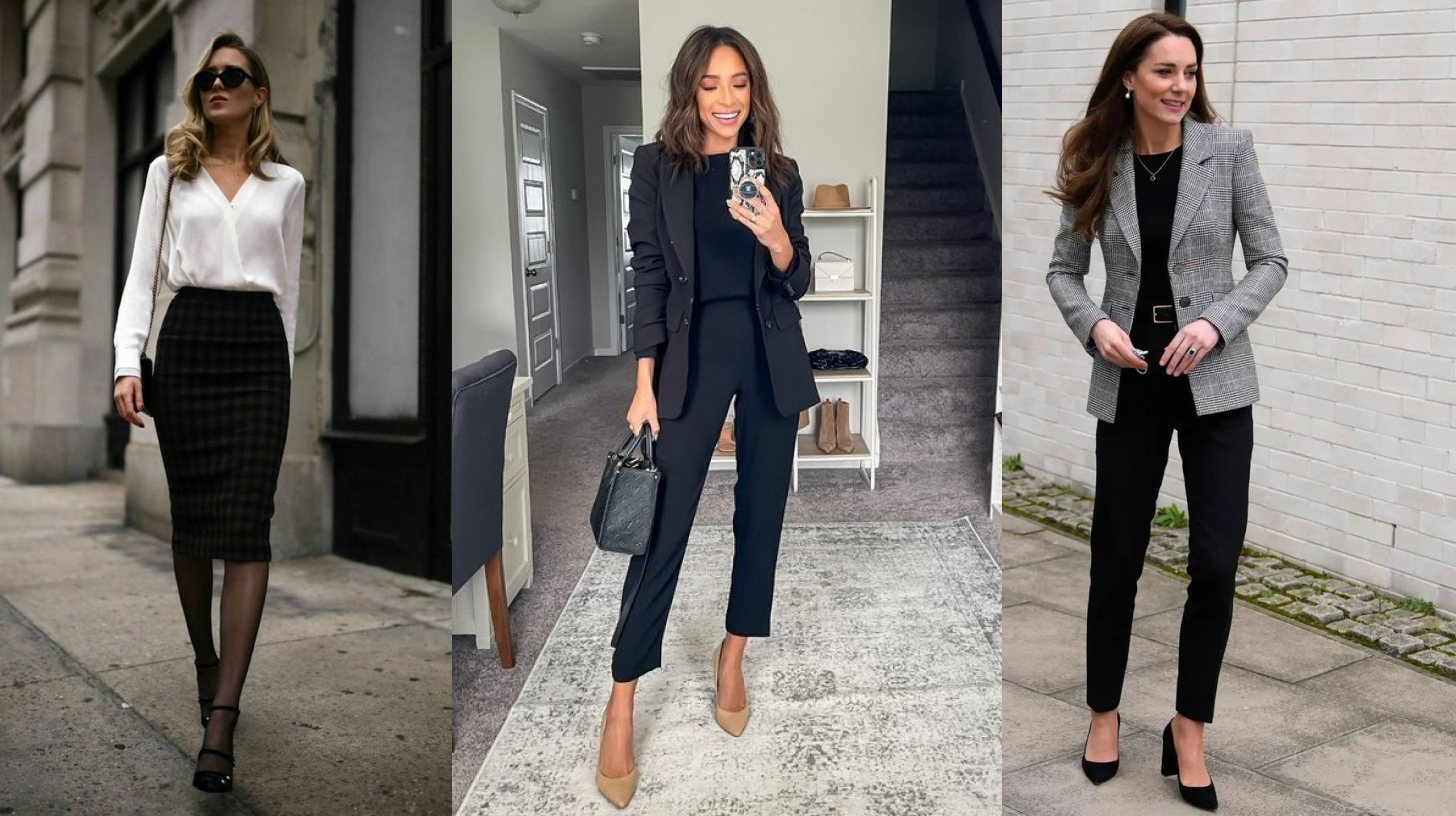
Business Casual
This dress code strikes a balance between formality and comfort, often adopted in tech startups and the fashion industry. It allows for more patterns, colors, and looser silhouettes.
For men, business casual typically involves dress slacks, a button-down shirt (with or without a tie), leather dress shoes, and a blazer or sports coat. Women adhering to business casual can opt for knee-length dresses, skirts paired with blouses, tailored slacks, closed-toe flats or low heels, and tasteful accessories.
Even within a business casual setting, there’s room for a more elevated style. Social psychology suggests that classic business suits can still benefit modern workers. In one study, a group dressed in formal clothing outperformed those in casual attire on both organizational and creative tasks 4.
For men aiming for a classier approach to business casual, here’s a helpful guide: link to the video.
These examples of business casual highlight the more relaxed guidelines compared to business formal:
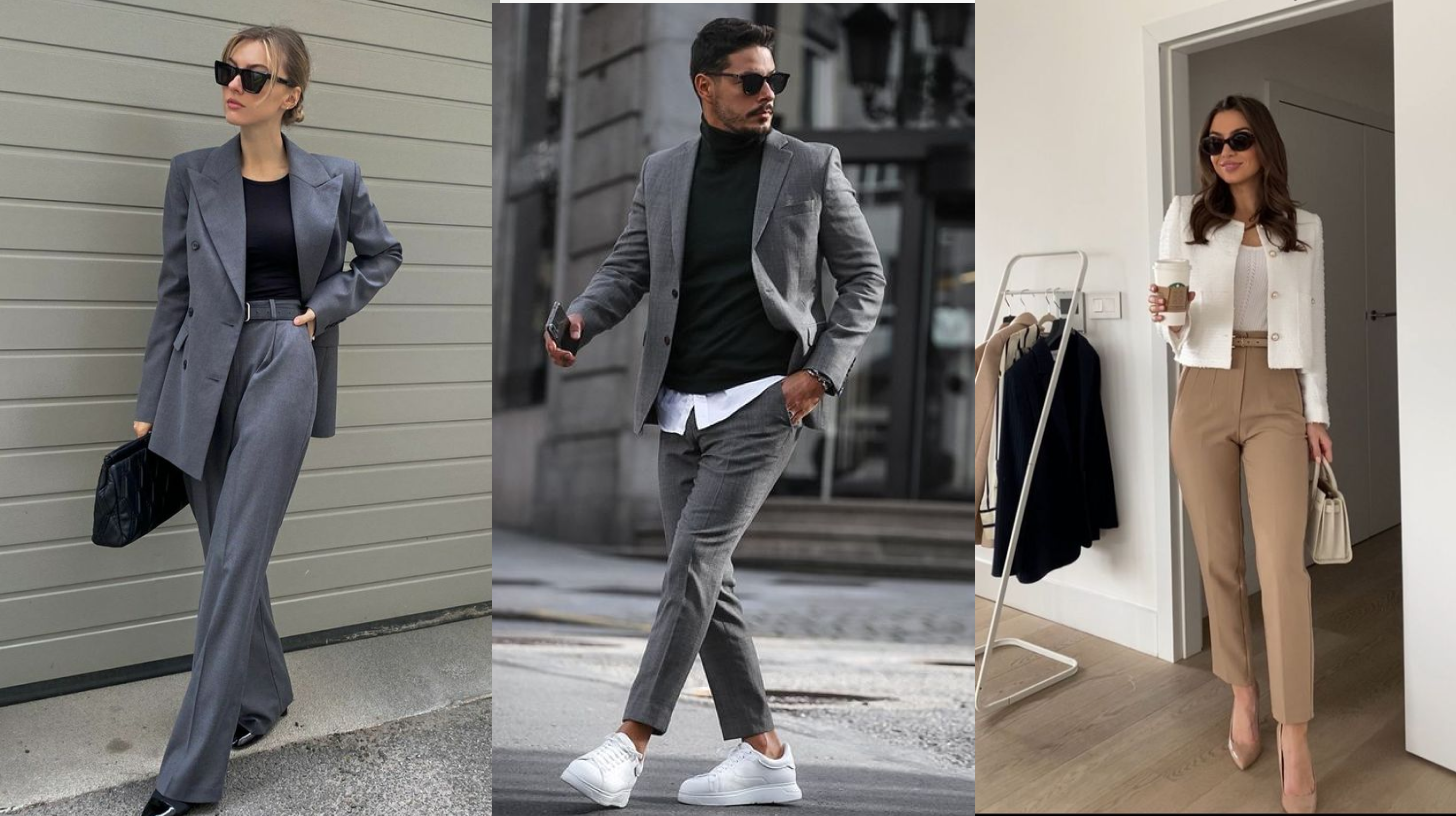
If you aspire to elevate your style and express a more personal flair within the business casual framework, this guide can be invaluable for crafting fashionable yet professional outfits: link to the video.
Semi-Casual or Smart Casual
This more laid-back dress code embraces a mix of casual and semi-formal elements. For men, it may involve khakis, jeans, or chino shorts paired with a short-sleeved collared or polo shirt. Women can explore options like blouses, sleeveless tailored shirts, skirts, or jeans, complemented by comfortable yet tidy shoes or sandals.
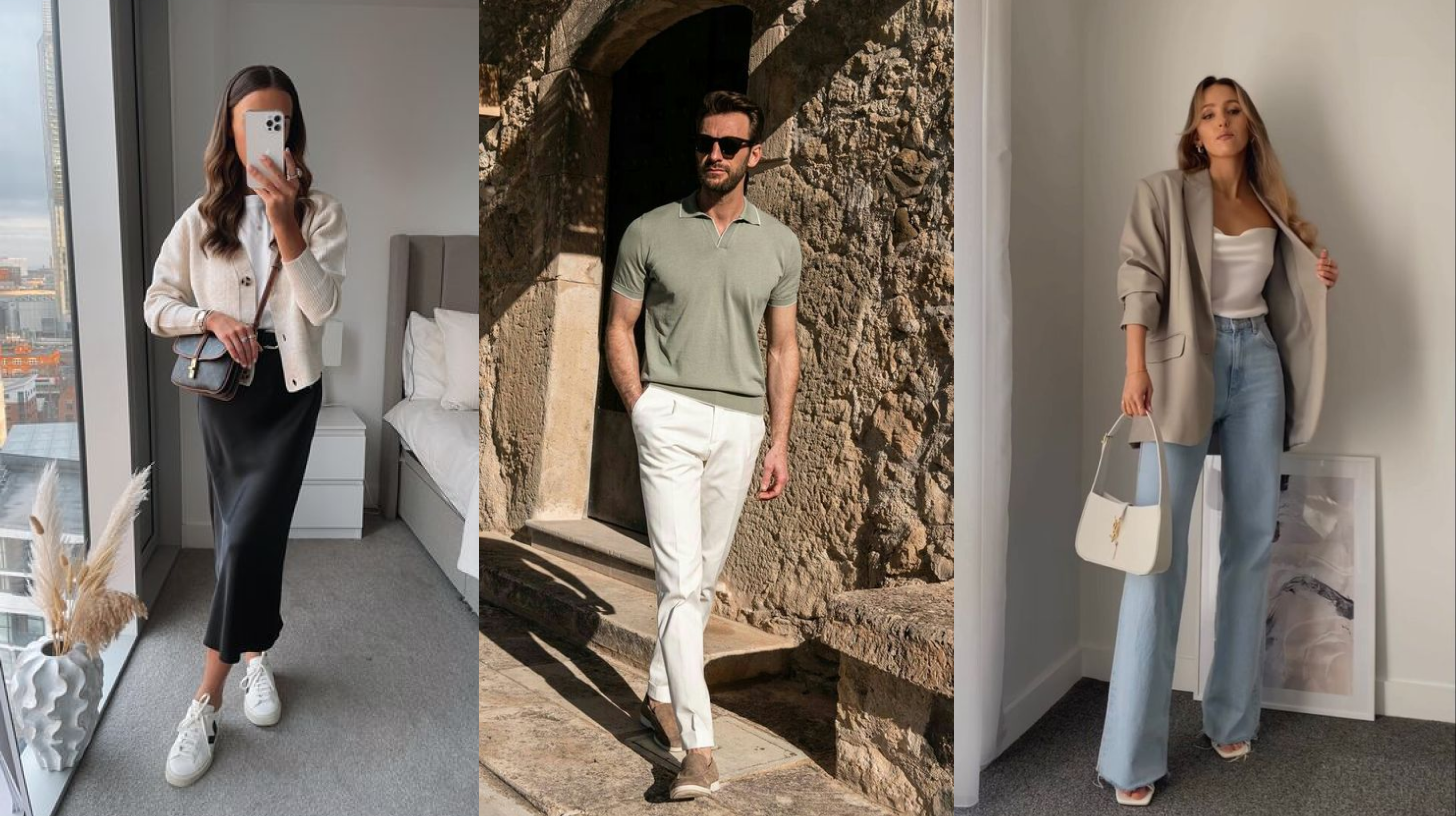
The distinction between business casual and semi-casual is nuanced, but generally, smart casual allows for the inclusion of jeans, shorts, and short-sleeved shirts, provided they are clean, unwrinkled, and not excessively revealing.
For men seeking smart casual outfit ideas, this video offers some great suggestions: link to the video.
Similarly, this video presents unique smart casual outfit ideas tailored for women: link to the video.
Casual
This dress code, being less formal, embraces a relaxed style that allows for maximum personal expression. It is commonly observed in remote workplaces and certain retail environments. Acceptable attire includes jeans, t-shirts, sneakers, and other casual clothing, but there are typically guidelines in place to ensure appropriateness and simplicity.
For instance, wearing inappropriate or controversial t-shirts is discouraged. Women are advised to keep the midriff covered and avoid exposing too much thigh.
While some workplaces permit athleisure wear (casual athletic clothes), tight leggings and sports bras are generally reserved for the gym. Similar to business casual, there’s room to elevate a simple dress code to appear more professional or competent.
Cultural Considerations
The expectations regarding employee attire are directly influenced by a company’s culture and location. Creative industries or startups may adopt a more relaxed dress code, fostering an environment that allows for personal expression and diverse styles.
However, it is crucial to balance personal expression with professionalism even in such environments. For instance, a designer or marketing creative might choose to wear a unique dress or blouse featuring exotic patterns, paired with bold jewelry. Nonetheless, the outfit is typically expected to maintain modesty, with a neckline and length that align with professional norms, often reaching the knee.

Regional and Seasonal Office Dress Codes
Office dress codes are significantly influenced by regional norms and seasonal variations. For instance, in a place like Montana, where cold weather and snow are prevalent, it’s considered normal to wear a beanie and winter boots to the office during the colder months, reflecting the practicality of the surroundings. Contrastingly, in urban startup environments like Boston, the expectation may lean towards a less “outdoorsy” and more urban or polished look.
It’s imperative to acquaint yourself with the cultural expectations of your workplace, respecting and aligning with those values. Additionally, considering local weather conditions is crucial when selecting attire, especially in regions with extreme temperatures.
Dressing appropriately for the climate not only ensures comfort but also contributes to maintaining a professional image.
Can I express my style while following the office dress code?
Absolutely! Expressing your personal style within the confines of the office dress code is not only possible but often encouraged in many workplaces. Striking a balance between professionalism and self-expression allows you to stand out while still fitting within the company culture. Here are some tips to help you navigate personalizing your wardrobe while staying within the office dress code:
- Know the Boundaries: Familiarize yourself with specific guidelines that outline what is considered acceptable and what is not. Understanding these boundaries will help you creatively work within them.
- Embrace Accessories: Incorporate accessories like jewelry, ties, scarves, and socks as a fun and subtle way to infuse your style. These small touches can add uniqueness to your outfit without violating dress code standards.
- Add a Pop of Color: While maintaining a professional color palette, introduce pops of color that resonate with your style. Consider adding a colorful blouse, tie, or pocket square to enhance a neutral outfit.
- Choose Flattering Silhouettes: Within the guidelines, select clothing styles that suit your body and personal preferences. Tailored pieces can enhance your silhouette while reflecting your individuality.
- Express Through Grooming: Grooming choices, such as hairstyles, facial hair, and makeup, also contribute to your style. Ensure that these choices align with the company’s standards and offer room for self-expression.
- Casual Fridays and Theme Days: If your workplace has casual Fridays or theme days, take advantage of these opportunities to express your style more freely within the designated boundaries.
- Footwear Freedom: Shoes are another area where personal style can shine. Opt for comfortable yet stylish options that align with the dress code, and experiment with different styles.
- Layer on the Personality: Utilize layering with pieces like blazers, cardigans, and vests to combine different elements while adhering to the dress code.
- Confidence Matters: Carry yourself with confidence. Confidence in your outfit choices will project authenticity and seamlessly blend your style with professional attire.
Remember, the key is to be respectful of your workplace’s expectations while finding creative ways to express yourself. Carefully selecting elements that reflect your individuality and incorporating them into your wardrobe can help you present a polished and stylish image in harmony with your company’s guidelines.
How To Dress Professionally On a Budget
Dressing professionally doesn’t have to strain your budget. Despite the common perception that professionalism is tied to expensive attire, competent business attire is achievable without a hefty price tag.
Here are some tips to help you maintain a polished appearance on a budget:
- Be Versatile: Invest in versatile, well-fitting basics that can be mixed and matched. Solid, neutral colors are ideal for creating various outfit combinations. For inspiration, check out how Steve Harvey utilizes five suits to make 75 different outfits in this YouTube video: link to the video.
- Find Discounted Staples: Take advantage of sales, explore second-hand stores, or browse online marketplaces for affordable wardrobe updates. Platforms like Poshmark, Nordstrom Rack, and ThredUp offer brand-name discounted or gently used clothing options.
- Accessorize Strategically: Elevate your outfits with affordable statement pieces. You don’t need expensive watches or pure gold jewelry to look polished. Incorporate subtle, classic accessories like a gold or silver necklace, stud earrings, a stylish watch, or a couple of favorite ties to enhance any outfit.
- Iron and Wash Properly: Extend the lifespan of your clothing by taking proper care of them, ultimately saving you money. Follow care instructions, wash delicates on a cold, gentle cycle, and keep work clothes wrinkle-free by ironing or choosing synthetic blend fabrics.
Remember, dressing professionally is more about presenting yourself neatly and cohesively than the price tag of your clothing. With strategic choices and care for your wardrobe, you can maintain a polished appearance without breaking the bank.
Simple Personal Hygiene
Maintaining simple personal hygiene is crucial, as research indicates that grooming cues like dirty fingernails or bad breath can lead to unfavorable social impressions 5. Regardless of your eloquence or charisma, personal hygiene plays a vital role in displaying self-care and valuing your role in the workplace.
While a Hollywood-style makeup and hair routine may not be necessary, basic grooming is essential for adhering to your office dress code and presenting an overall professional appearance. Here are some fundamental practices to bear in mind:
- Hair: Keep your hair well-groomed with neat hairstyles such as buns or ponytails. Men should maintain trimmed beards or facial hair. On challenging hair days, consider options like a headband, silk head scarf, dry shampoo, or a sleek bun. Check your workplace dress code regarding the allowance of hats, especially in business-casual settings.
- Teeth: Practice good oral hygiene, including regular dental check-ups. Keep breath fresh with pocket breath spray or mints, especially before close interactions in meetings.
- Nails: Ensure your nails are clean and trimmed, avoiding overly loud or long nail art. Regardless of gender, maintaining clean fingernails is crucial, as it significantly influences first impressions.
- Odor: Use deodorant, perfume, or cologne to create a pleasant aroma, but be mindful not to overdo it, considering potential allergies of others.
- Details: Pay attention to small signals of cleanliness, such as wearing ironed pants, wrinkle-free shirts, and polished shoes.
These practices demonstrate an attention to detail, contributing to a professional and well-put-together appearance in the workplace.
Changing Your Office Wardrobe With the Seasons
Adapting your office wardrobe to the changing seasons is essential for maintaining professionalism. Here are some tips to help you transition your wardrobe seamlessly:
Layering: Use layers to stay comfortable in fluctuating temperatures. Blazers, cardigans, or lightweight jackets are excellent options. In colder climates, consider investing in one or two pea coat-style jackets that can easily fit over any outfit.
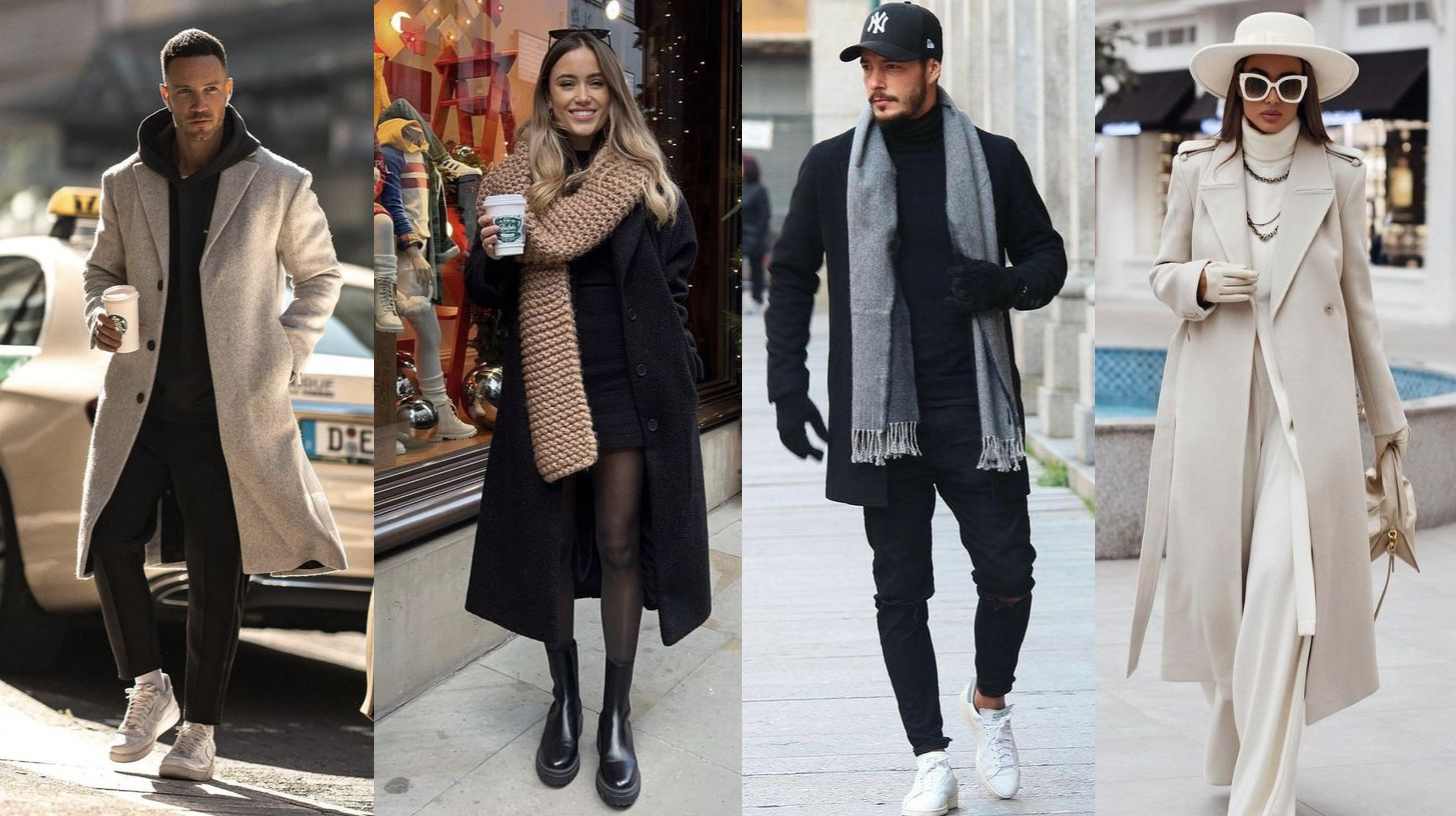
- Fabrics: Choose breathable fabrics like cotton, linen, or wool blends for summer. For winter, opt for warmer materials such as wool or cashmere.
- Colors: Adjust your color palette to match the aesthetics of each season. Opt for lighter shades in summer and darker tones in winter.
- Footwear: Switch sandals or open-toe shoes for closed-toe options during colder climates. For men, consider wearing thicker socks and polished leather boots. For women, sleek boots paired with tights are a stylish and practical choice.
By incorporating these tips into your wardrobe transition, you can ensure a polished and professional appearance throughout the changing seasons.
Enhancing Your Professional Look with Accessories
While briefcases and pagers may be relics of the past, incorporating professional accessories remains an effective way to personalize your workplace attire and exhibit your unique style. Achieving a harmonious balance between self-expression and professionalism is crucial. Consider the following recommendations:
- Jewelry: Choose subtle and tasteful pieces that complement your outfit without being overly distracting.
- Bags: Opt for a functional professional bag or laptop case that aligns with your overall appearance.
- Fragrance: If you desire, use a light and subtle scent, ensuring it is not overpowering and respects the sensitivities of others.
It’s important to note that accessories should serve to enhance your professional image rather than overshadow it.
Bonus Tips: Creating a Memorable Impression in Interviews and Meetings
You may be familiar with the concept of “power poses,” but have you considered the impact of “power dressing”? Certain occasions demand careful consideration of your clothing choices to leave the best possible impression. Here are some tips for dressing professionally during significant events:
- Harness Enclothed Cognition for Confidence Boost: Utilize enclothed cognition 6, a psychological phenomenon where clothing influences confidence and even helps create an alter ego. This phenomenon explains why individuals wearing lab coats perform better in intellectual tasks than those in regular clothes. Ask yourself, “How does the most successful/smart/confident version of myself dress?” Consider emulating a role model while expressing your unique style.
- Elevate Competence with Formal Attire: A tailored outfit and polished shoes convey the social cue of intelligence and capability. In crucial situations such as job interviews or important client meetings, opting for more formal attire can enhance your competence cues, projecting a professional, serious, and intelligent image.
- Embrace Casual Attire for Approachability: People in casual clothing are perceived as friendlier 7 and more laid-back than those in formal wear. Adjusting your outfits to a more casual style can be beneficial when you want to appear approachable. For instance, when delivering an annual review, terminating an employee, or sharing challenging news with your team, dressing more casually can help soften your appearance.
Action Step: Create an Office-Style Vision Board for Inspiration:
- Develop a vision board categorizing formal, business casual, and seasonal styles to inspire your next shopping spree. Use platforms like Pinterest, Instagram, or Google Images to discover outfit ideas from individuals you admire. Whether it’s the classic Steve Jobs black tee and jeans for the tech space or the style choices of a female CEO like Sarah Kunst, gather 10-20 photos and organize them in Canva or on paper. This visual guide can serve as inspiration for your future work wardrobe purchases.
Key Takeaways: Elevate Your Workplace Wardrobe for an Impactful Impression
Whether navigating the realm of corporate sophistication or embracing the creative vibes of a startup, curating your office attire stands out as a crucial step for creating lasting impressions.
Remember to:
- Inquire About the Office Dress Code: If the dress code isn’t explicitly outlined in your orientation or employee handbook, seek additional details from your supervisor.
- Opt for Formal Attire for Productivity: Scientific studies indicate that more formal attire can contribute to increased productivity.
- Enhance Competence with Formal Wear: The quality and tailoring of your clothing directly influence how capable and intelligent you appear.
- Infuse Warmth with Casual Wear: Embrace more casual outfits in friendly settings, such as employee lunches, staff retreats, or when delivering challenging news.
- Adhere to the Dress Code, Even While Working Remotely: Maintain a professional appearance on Zoom calls by following the dress code, even when working from home.
Seek More Insights? Delve into the Intriguing Realm of Fashion Psychology: What Your Choice of Clothes Reveals About You. MASTER YOUR SKILLS
- https://www.emerald.com/insight/content/doi/10.1108/13612021311305128/full/html
- https://journals.sagepub.com/doi/abs/10.1111/j.1467-9280.2006.01750.x
- https://www.sciencedirect.com/science/article/abs/pii/S0738399112000900
- https://journals.sagepub.com/doi/abs/10.1177/1948550615579462
- https://journals.sagepub.com/doi/abs/10.2466/pms.1974.38.3c.1269
- https://www.sciencedirect.com/science/article/abs/pii/S0022103112000200
- https://www.columbia.edu/~ms4992/Publications/2015_Slepian-Ferber-Gold-Rutchick_Clothing-Formality_SPPS.pdf



